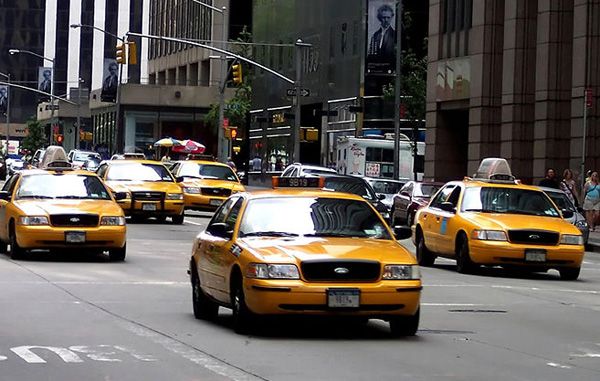
With a series of articles called “Need to Know,” City Limits opens a space in which New Yorkers (our primary focus is the Latino community) can find capsules of practical and simple information. Write your suggestions for future installments to daniel@citylimits.flywheelstaging.com
First of all, what is a taxi medallion?
A taxi medallion, also known as CNPC (Certificate of Public Necessity and Convenience), is a transferable permit to drive a taxi in New York.
When did taxis begin to be used in New York City?
Taxis, as we traditionally know them with taximeters, began to roll in October 1907. Before that, New Yorkers had experimented with other ideas to decongest the city streets (such as bicycles, electric and steam cars) It was Harry N. Allen who imported the first fleet of 65 new French petrol-fueled Darracq cars, equipped with taximeters and in just over a year, New York had around 700 taxis.
When did the taxi medallions begin to be used?
In February 1937, Councilman Lew Haas proposed a bill to limit the number of licenses or medallions to the 13,595 taxicabs that existed at that time. The law did not pass on its first attempt, but in March of ‘38 it was approved. The current number of taxi medallions is 13,587, which is very close to the initial number of licenses approved.
How much did the taxi medallions cost in 1937?
According to historian Graham Russell Gao Hodges, author of the book “Taxi! A Social History of the New York City Cabdriver,” after the passage of the Haas Act, “no one expected the medallions to ever be worth more than the ten-dollar license fee.” By 1950, the medallions cost $5,000 on average. This price continued to rise up until 2014 when a medallion cost $ 1.3 million dollars. Afterwards, prices dropped and many of those who bought medallions at high prices, are now paying debts that average ranging between $500,000 and $600,000 dollars. Currently, the price of a taxi medallion ranges between $120,000 and $150,000.
What were “gypsy cabs”?
They were unlicensed taxis that operated informally and worked mostly in neighborhoods outside Manhattan where licensed taxi drivers sometimes refused to provide service.
When were “gypsy cabs” regulated?
In the 1960s, one of the issues with taxis was the increase in driver discrimination when deciding whether to pick up a passenger or not. In addition, many users could not distinugish a licensed taxi from an unlicensed one, so in the late 1960s, city lawmakers created the requirement that all taxis with medallions have to be yellow. Years later, on March 2th, 1971, the New York Taxi & Limousine Commission (TLC) was created. During the decade of the seventies, the taxi industry was subdivided once again to give rise to the “black car” industry which primarily served corporate customers. Black cars did not have a cap as yellow taxis do, or need a medallion. This relatively unregulated landscape is where Uber, Lyft, and other ride-hailing apps precipitously expanded until 2018 when they reached a total of 107,435 active vehicles in the city.
What are green taxis?
In addition to yellow cabs with medallions and black cars, there are also green taxis. Green taxis were created in 2013 and restricted to not picking up people below 110th Street on the west side or below 96th Street on the east side or picking up people from LaGuardia or JFK airports. Green taxis must be equipped like yellow taxis (with taximeters, GPS, ceiling light, credit/ debit processing card machine) and must pass the emissions inspection, but they do not require medallions.
How many miles does a typical taxi travel in New York?
According to the “Taxicab Factbook,” the average NYC taxi drives 70,000 miles per year, more than five times the national average of 13,476 miles per year. This can partly explain why city taxis are mostly recent models, on average those cars are from the last three years. Also, the Taxi & Limousine Commission performs three mechanical inspections per year on each of these vehicles. In comparison, green taxis are inspected every six months and vehicles that use the apps (Uber, Lyft, etc.) are inspected once at the end of the vehicle license process and this license must be renewed every two years.
Currently, what are the countries of birth of drivers of all the NYC varieties of taxicabs?
According to the most recent “Taxicab Factbook,” these are the six countries of birth with the highest number of drivers in the city.
| Yellow | Green | Black |
| Bangladesh (26,8%) | Bangladesh (22,9%) | Dominican Republic (13,8%) |
| Pakistán (10,9%) | Pakistán (12,8%) | Bangladesh (11,9%) |
| India (8,8%) | Dominican Republic (11,9%) | Pakistán (10,5%) |
| Haití (5,7%) | India (7%) | U.S.A. (9,4%) |
| U.S.A. (4,5%) | Haití (3,5%) | India (6,3%) |
| Ghana (4,1%) | EE.UU. (3,4%) | China (5,2%) |








